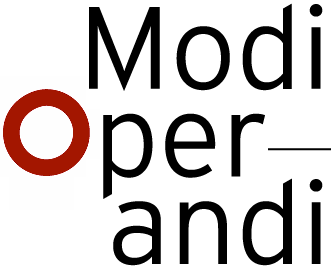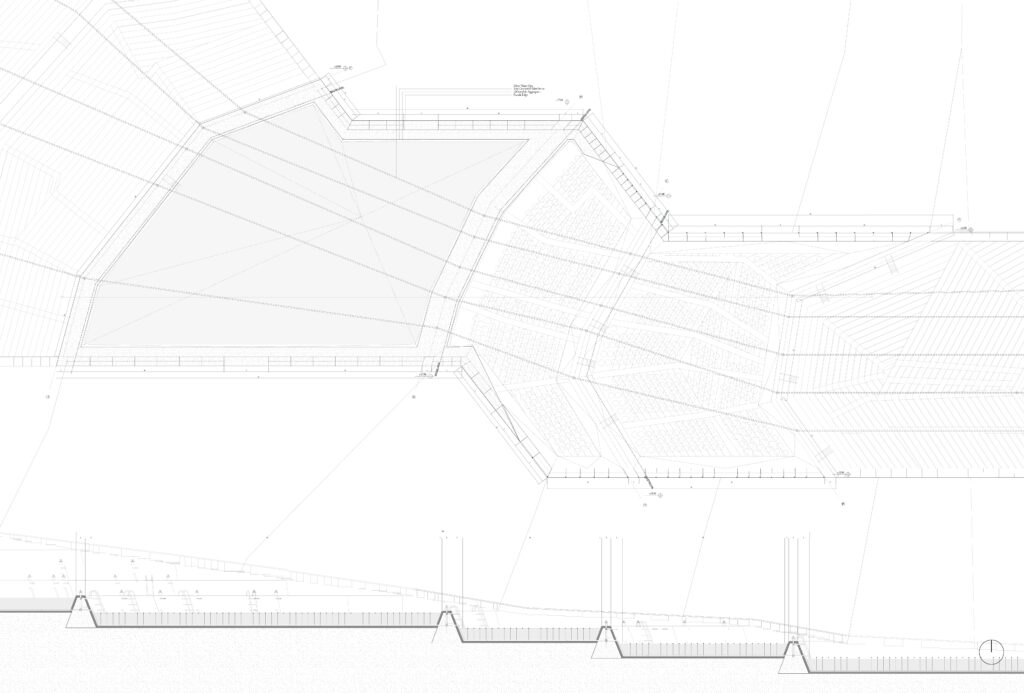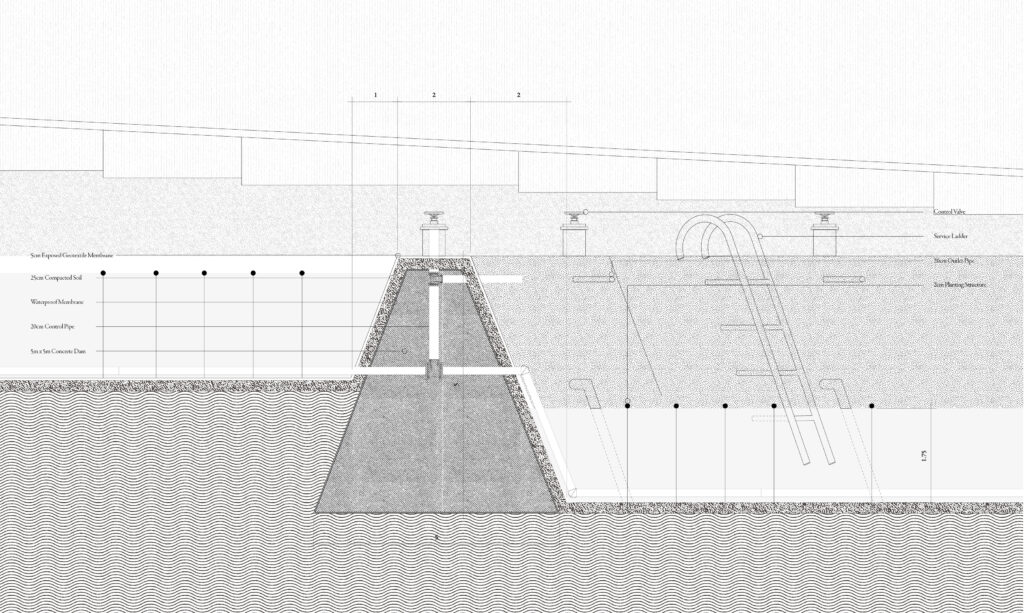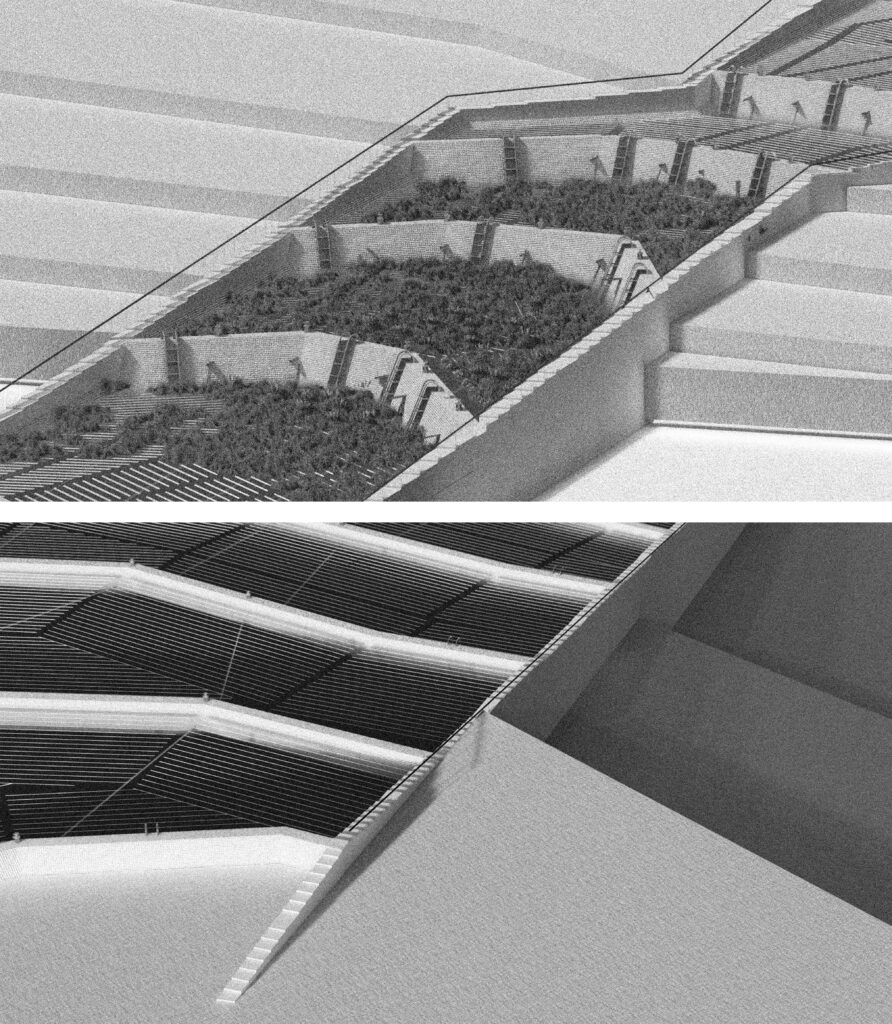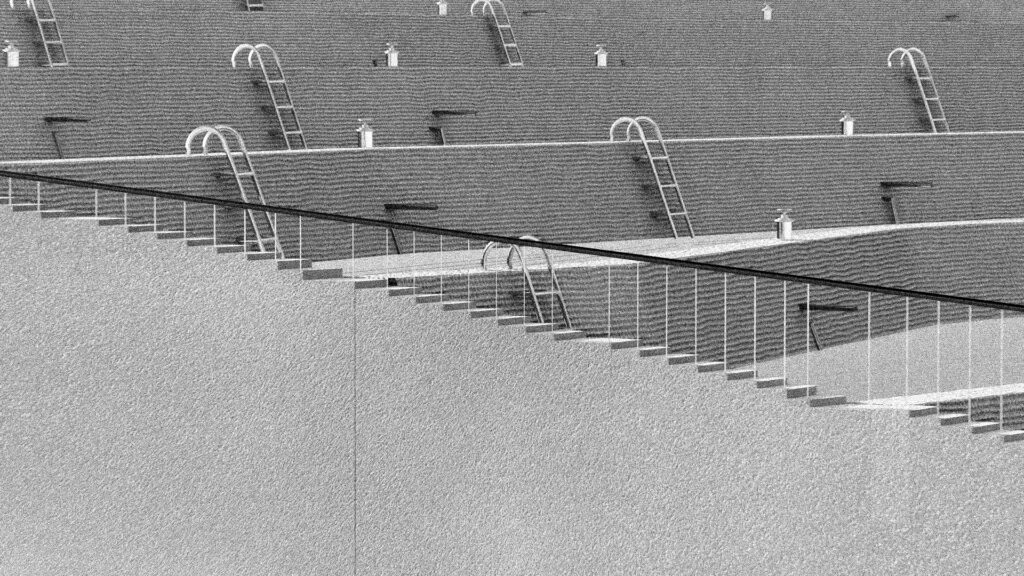WETLAND: ANGER / FORCEFUL RECLAMATION
The stage of Anger is manifested in the second intervention proposal. The intervention takes the form of an intricate network of perforations and terraforming, literally projecting the transformative aspect of anger upon the dead landscapes. Stretching across the desolate landscape, a vast expanse of land is intentionally punctured, becoming a canvas for total reclamation.
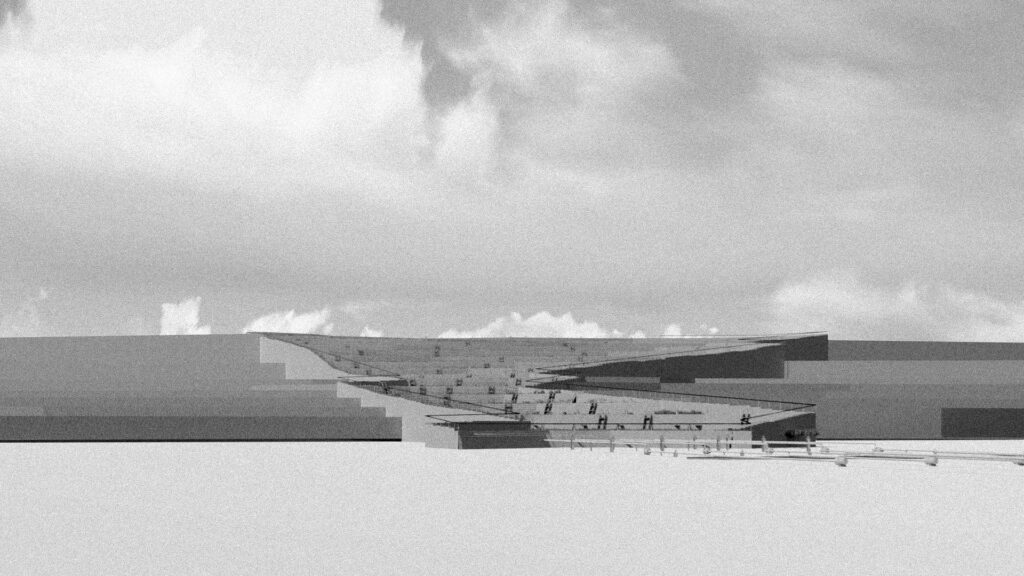
The first encounter with the Wetland intervention offers a landscape riddled with precisely designed perforations, each serving as an intentional act of defiance against the barrenness and stagnation that characterizes the territory. Through the controlled act of perforation, the intervention forcefully embraces the land, creating a network of shapes and forms. They propel wetland basins that serve as catalysts of transformation, contrasting with the state of the dead landscapes.
The wetlands become channels for new beginnings to emerge, allowing the reclamation of nature and initiating a process of rebirth and rejuvenation. Within the carefully crafted contours of the perforated landscape, terraforming takes place. The original state of the landscape pre-mortem is redrawn, giving nature the tools to naively reshape the terrain in a display of power. The intervention embodies the inherent capacity of anger to drive change, to forcefully shape and redefine the environment to reflect a new reality. The act of perforating and terraforming the landscape becomes a ritualistic endeavor, symbolizing the collective will to reclaim what has been lost. It signifies a profound belief in the potential for transformation and the refusal to accept the very desolation that once dominated the territory.
As visitors navigate through the transformed landscape, they witness the results of anger’s transformative energy. The new topography emerges as a testament to the power of defiance and resilience, demonstrating that in the face of loss, anger ignites a naive spirit of renewal. This second intervention is an invitation to explore the intricacies of the perforated and terraformed landscapes, and to reflect on the inherent potential of anger as a catalyst for change. It prompts contemplation on the significance of reshaping the physical environment for healing and rejuvenation, in a violent attempt to rewrite the narrative of the dead landscapes through acts of defiance and radical transformation.
By engaging with the intervention, visitors become active participants in the ritual of reclamation. They are invited to witness and undergo the perforated landscape, to observe the reshaping of the terrain and to reflect on the power of anger in propelling the transformation of not only the physical environment but the emotional and psychological landscapes that accompany the grieving process as well.
